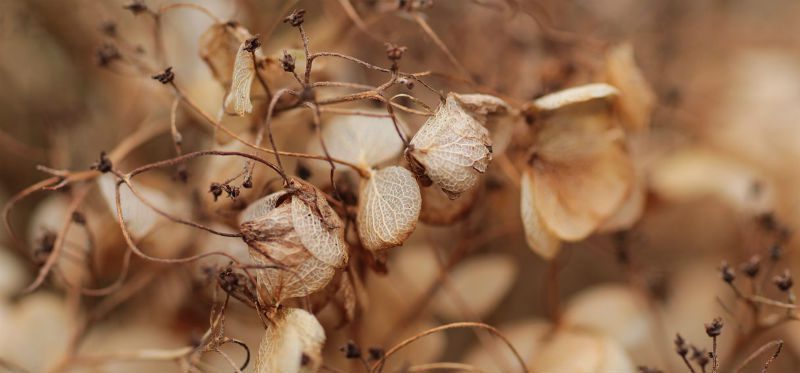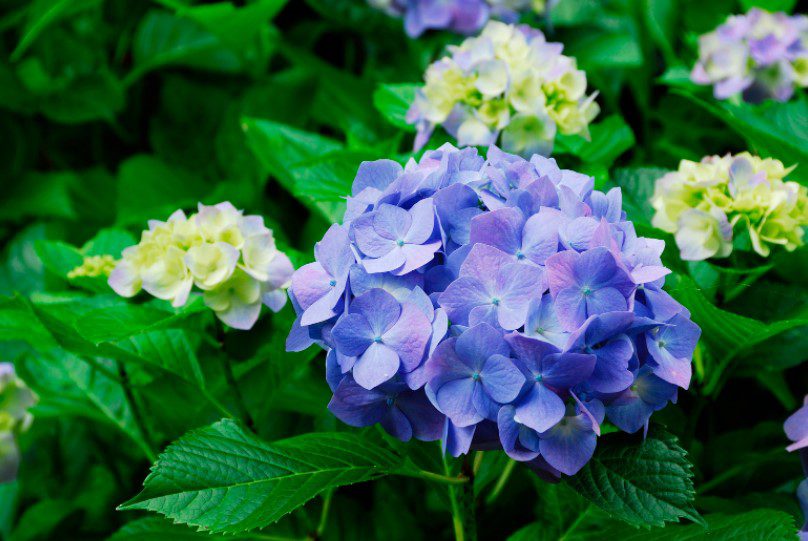Hydrangea Seeds
How to Grow Hydrangea from Seeds
The first step to growing hydrangeas from seeds is to collect them. It is not as simple as you might think. Each hydrangea flower is actually a combination of tiny, showy, sterile, and fertile flowers.
The seeds are found in the fertile flowers. You will need to gather the seeds before you can start planting hydrangea seeds.
This is how it works:
- Wait for the blossom to die and fade. Keep an eye on the flower and place a paper bag above it as it dies.
- The stem can be cut, and the flower head dried in the bag.
- The seeds will be separated from the flower by shaking the bag for a few days.
Take care to remove the seeds. These seeds are small and easily mistaken for dust. After harvesting them, you can immediately start sowing hydrangea seedlings.
You can also save the seeds in a cool area until spring so that you can start sowing them. You can use either surface sow the seeds or use potting soil to fill a flat.
The soil should be kept moist to protect them from wind and cold. They usually germinate within 14 days.
The hydrangea has been undervalued for too long, being a shrub for cottage garden gardens. However, it is now experiencing a revival in floral design. The often-giant flowers are elegant and chic.
Hydrangea quercifolia can grow to 3 m in height, with a spread equal or greater to the height due to vigorous spreading by stolons. The upright, small-branched, and mounded habit of plants is characteristic.
Early summer is when conical inflorescences of white to cream color are produced. They can reach the size of up to 30cm in length.
Inflorescences are composed of large, sterile sepals as well as inconspicuous fertile blooms. As they age, many sepals turn attractive pink or red colors. Exfoliating bark and mahogany red autumn foliage add fall and winter interest to the landscape.

Here are some pointers to your success.
- Well-drained, moist soil (hydrangeas won’t tolerate wet feet ever!)
- Every day, you need to get some sun. Although hydrangeas are often thought of as shade plants by most people, they can thrive with at least five hours of sun exposure each day, ideally in the morning. Panicle Hydrangeas can tolerate full sun in northern climates and are therefore the most sun-tolerant.
- Hydrangeas need plenty of water, especially when they’re getting established. Hydrangeas are quick-drying because they have shallow roots. Any hydrangea plant can benefit from a 2-3 inch thick layer of shredded bark mulch.
They are confusing because of the differences between these six hydrangeas.
Flowering
Hydrangeas are tricky because different varieties have different flowering patterns.
Smooth hydrangeas and panicle Flower on new wood (growth that was created during the current season). These hydrangeas flower buds develop after the plant leaves out in spring. They open in summer. These plants can flower reliably every year, regardless of how cold it was.
Bigleaf and mountain hydrangeas Old wood (growth from the previous season) is what flowers on. These hydrangeas flower buds begin to form in the late summer. They must be left undisturbed throughout the fall, winter, and spring to bloom the following summer.
These plants won’t flower if they are:
- They have been pruned. Potential flower buds can be removed by pruning at any time.
- Deer will browse them and eat the flower buds.
- Weather can cause damage to them. The problem is not winter weather. It is spring when a sudden frost follows several days of warm weather that the flower buds are most susceptible to being damaged.
Hydrangeas reblooming These are also called remontant hydrangeas. They are both types of big leaf and mountain-hydrangeas.
They have the rare ability to bloom on both old and fresh wood. Even if winter weather damages the buds,
The plant can still bloom on the wood it has produced during that season. The Let’s Bloom Hydrangea varieties are reblooming.
Tuff Stuff and Dance Series.
Color
All hydrangeas experience some color changes as they age. However, only mountain and bigleaf hydrangeas can change their color in a controlled, predictable manner. This is because of the soil’s aluminum content.
- Some bigleaf varieties of hydrangeas are not able to experience color changes. In general, the more intense the color is, the less likely it will change. (Cityline Paris Hydrangea is an example). The color of white varieties bigleaf Hydrangeas will not vary.
- Although it is simpler to transform a hydrangea pink to blue than pink to pink, both require chemical applications in precise amounts and at specific times. To determine the best course, a soil test is needed. You should carefully shop for the right products and follow all instructions if you plan to alter the color of your flowers.
- The color of the flowers will not be affected by the presence of nails or pennies in the soil.
Pruning
- Reblooming hydrangeas should not be pruned, and old wood hydrangeas should not be pruned. These hydrangeas should be placed in a way that they don’t need to be pruned. Also, choose varieties that aren’t too large.
- They are a valuable asset to space.
- Hydrangeas that flower from new wood can be pruned every spring as new growth emerges.
- If you want to encourage vigorous new development and strong stems, remove up to one-third of each season’s height.
- Support the flowers.
- Hydrangeas don’t require any special pruning. They can grow and bloom well without any additional pruning.




























Comments are closed.